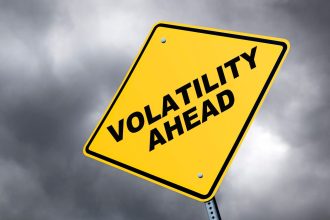Budgeting is fundamental to achieving financial well-being. It equips you with the tools to track your income and expenses, identify unnecessary expenditures, and allocate funds toward savings, debt repayment, and investments.
Effective budgeting helps fulfill immediate financial obligations. It also lays the groundwork for long-term financial security and independence. Consider the following:
Common Budgeting Methods
Envelope System
The envelope system is a cash-based budgeting technique where monthly expense categories are allocated specific cash amounts in separate envelopes. This approach limits spending to the amount available in each envelope to prevent overspending.
The primary advantage of this system is its simplicity and the tangible control you have over your cash flow. However, its reliance on physical cash can pose limitations in today’s digital economy, where online transactions are commonplace.
Additionally, the security risk associated with carrying significant amounts of cash and the potential inconvenience of managing multiple envelopes are notable drawbacks.
“You may use budgeting apps as a complement to help you track expenses better and set reminders for envelope refills,” advises Collin Lyon, ChFC, of 11 Financial.
Zero-Based Budgeting
Zero-based budgeting involves assigning every dollar of income to specific categories until there is no unallocated income left. This method fosters a high level of discipline and accountability, as it forces you to justify every expense and savings goal.
“Zero-based budgeting can be the most helpful while setting up your financial foundation or getting out of high-yield and consumer debt,” says Legacy Financial CEO Laura Dix, who also is a certified financial planner.
However, the rigidity and the intensive planning this method requires can be daunting for those with fluctuating incomes.
Percentage-Based Budgeting
Percentage-based budgeting simplifies financial management by dividing income into fixed percentages for various categories. It offers flexibility, as you can easily adapt to changes in financial circumstances while ensuring a balanced approach to spending and saving.
A common example of a percentage allocation is the 50/30/20 rule. You spend 50% of your budget for household expenses and needs, such as rent, utilities, groceries, and insurance; 30% for discretionary spending, such as vacations, dining out, or watching a movie; and 20% on savings and investments, such as retirement accounts or an emergency fund.
“If you find 50% is too steep for your necessities, you may adjust the percentage to 70%, reduce your discretionary spending to 10%, and maintain 20% for savings and investments,” Lyon adds. “This way, you have more money to spend on essentials and still save the same amount.”
Pay Yourself First
This strategy emphasizes the importance of saving by allocating a portion of income to savings and investments before covering any other expenses. It promotes financial security and growth.
“This method is also helpful to remove the guilt of spending on things you enjoy,” adds Dix. She says it’s worked well: “A client can see the funds have already been used intentionally so they can spend without guilt or remorse.”
You can set up automatic transfers to your savings accounts or investment funds to ensure that the pay-yourself-first principle is consistently applied, making saving a seamless part of your financial management.
This strategy is most effective if you have a stable income and control over your spending, as it requires a sufficient financial cushion to accommodate upfront savings.
Priority-Based Budgeting
Priority-based budgeting ranks expenses according to their importance and allocates funds based on these priorities. This method allows for flexibility in budgeting and adapting to changing financial circumstances and priorities.
The ability to focus spending on what is most important you or your family makes this method appealing; however, it requires discipline and clarity regarding financial goals to be effective.
Furthermore, the subjective nature of determining priorities can lead to inconsistent budgeting practices or neglecting long-term goals in favor of immediate desires.
Tips And Best Practices For Effective Budgeting
Create And Adjust Your Budget
“Failing to plan is planning to fail,” advises Danielle Darling, CDFA of LPL Financial. “Having a budget, regardless of how much or how little you make, is essential and one of the best things you can do for yourself.”
Start by assessing your income and expenses to understand your financial situation thoroughly. Identify all sources of income, track and categorize your expenses, and set realistic financial goals that include short-, medium-, and long-term objectives.
Your budget should be flexible, allowing adjustments to accommodate life changes, income fluctuations, and unexpected expenses. Prioritize your goals based on urgency and importance, ensuring you always work toward your most critical financial milestones.
Track And Manage Expenses
Choose a budgeting tool that suits your lifestyle, whether a simple spreadsheet, pen and paper, or a sophisticated budgeting app. The key is consistently monitoring your spending patterns to identify areas where you can cut back or reallocate funds.
Robin W. Haire, AIF, highlights the usefulness of budgeting apps in the case of retirees. “Financial planning software is crucial to show retiree clients how taking lump sum withdrawals can cause them to run out of money before they run out of time —this can be an eye opener,” Haire says.
Whatever tool you use, regularly review your expenses to ensure they align with your financial goals, and don’t hesitate to adjust your spending habits as needed. Analyzing your spending can reveal surprising areas where small changes can lead to significant savings over time.
Deal With Irregular Income
Creating a budget that accounts for income fluctuations is vital for those with variable incomes. Estimate your average income based on past earnings and plan your expenses accordingly. Always err on the side of caution by underestimating income and overestimating expenses.
Building a buffer for leaner months and an emergency fund can provide financial stability and peace of mind. During higher earning periods, prioritize replenishing this buffer and increasing your savings.
Manage Debt And Automate Savings
Debt can be a significant burden, affecting not only your financial well-being but also your mental health and quality of life. A focused approach to debt repayment is essential for reducing stress and building a solid foundation for your financial future.
Two popular methods for debt repayment are the debt snowball and debt avalanche. While the debt snowball focuses on paying off debts from smallest to largest balance to build momentum, the debt avalanche method prioritizes debts with the highest interest rates first, potentially saving more money in the long run.
The choice between these strategies depends on what motivates you most: quick wins or overall savings. The key here is to move away from debt and free up more money for savings or other spending.
Simultaneously, automate your savings to ensure you’re consistently setting money aside for future needs, investments, and emergencies. Find opportunities to cut discretionary spending and redirect those funds toward your debts or savings.
Stick To Your Budget
Set realistic expectations and resist the temptation of impulse purchases by implementing strategies like waiting periods for large expenditures. Celebrate financial milestones to motivate continued adherence to your budgeting plan without compromising your long-term goals.
Remember, budgeting is not about restricting your life but about empowering yourself to make informed financial decisions that support your overall well-being.
“We don’t ask our clients to pursue living on a calculated budget,” says Flagship Harbor Advisors Executive Vice President John P. Sawyer, III, who also is a CFP. “We find that an unrealistic endeavor.”
Nonetheless, Sawyer says they work with people on a detailed analysis of their income and expenses to identify excess cash flow and automate investments. “Then clients have the uncanny ability to live as they usually do, making ends meet and paying monthly expenses, but now they have an automated investment plan in place –contributing as much as they can afford without feeling like they’re tied to a budget,” he notes.
Final Thoughts
The budgeting strategies above each have their unique benefits and considerations. From the envelope system to priority-based budgeting, selecting a suitable method depends on your financial situation, preferences, and goals.
“Any budgeting system will be great to utilize if you’re able to determine if you have a positive or even negative cash flow,” Darling reminds readers. “Your goal is to have a positive cash flow. If you have a negative cash flow, it’s time to identify ways to increase income or cut expenses.”
Adopting a proactive approach to budgeting is crucial for achieving financial well-being. By carefully selecting and applying appropriate budgeting strategies, you can take control of your financial future, ensuring stability, growth, and peace of mind.
Read the full article here














